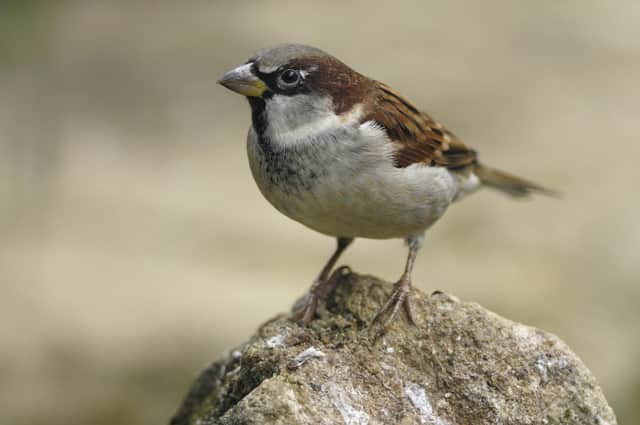The Nature column with the RSPB’s Beccy Speight: Jays fly up the charts in this year’s Birdwatch survey


The RSPB Big Garden Birdwatch has revealed that the house sparrow remains the number one bird across East Yorkshire – and the UK.
While house sparrows held on the top spot, the jay surprisingly flew up the charts going up nine places.
The top 10 birds spotted during the event were:
1. House sparrow
2. Blue tit
3. Starling
4. Woodpigeon
5. Blackbird
6. Robin
7. Goldfinch
8. Great tit
9. Magpie
10. Chaffinch
Advertisement
Hide AdAdvertisement
Hide AdBig Garden Birdwatch is the world’s largest wildlife survey and gives RSPB scientists insights into how our garden birds are faring.
Now in its 43rd year, RSPB’s Big Garden Birdwatch is a chance for people of all ages to count the number of birds that visit their garden helping the RSPB get a snapshot of how they are doing.
This year almost 700,000 people across the UK took part, counting more than 11 million birds.
In East Yorkshire, house sparrow took the top spot, followed closely by starling and blackbird. This year, more than 5,000 people across the county took part in the Big Garden Birdwatch.
Advertisement
Hide AdAdvertisement
Hide AdIn the UK, jay moved up nine places to number 23, an increase of 73% compared to 2021 numbers.
Each autumn, jays, a colourful member of the crow family, can often be seen flying back and forth finding and hiding acorns to help see them through the winter.
We don’t know the reasons for the sudden increase in jay sightings this year.
It may be down to food availability, as we have reports that last year was poor for acorns, but whatever the reason a sighting of this stunning bird is enough to raise one’s spirits any day of the year let alone on a gloomy January weekend.
Advertisement
Hide AdAdvertisement
Hide AdIt’s been brilliant to see so many people taking part again this year, taking time out to watch and reconnect with birds and then generously submit their sightings to help RSPB scientists gain some insights into how our garden birds are faring. Big Garden Birdwatch results also found a small increase in greenfinch compared to 2021.
This gives scientists a glimmer of hope that this might be the first signs of a population recovery, but only time will tell.
In recent years the greenfinch has suffered a population crash (62% since 1993) caused by a severe outbreak of the disease trichomonosis and as a consequence the species was added to the UK Red List last year.
Over its four decades, Big Garden Birdwatch has highlighted the winners and losers in the garden bird world. It was first to alert the RSPB to the decline in song thrush numbers, which are still down 81% compared to the first Big Garden Birdwatch in 1979.
Advertisement
Hide AdAdvertisement
Hide AdThis species was a firm fixture in the top ten in 1979. By 2009, its numbers were less than half those recorded in 1979, it came in at 20 in the rankings this year, seen in just 8% of gardens.
Throughout the first half of the spring term the nation’s school children took part in the RSPB’s Big Schools Birdwatch. The UK-wide survey of birds in school grounds saw almost 60,000 school children and their teachers spend an hour in nature counting the birds.
Woodpigeon was the most numerous species seen with an average of eight per school; and was seen in 83% of all schools that took part.
Blackbird was a close second with an average of seven per school.